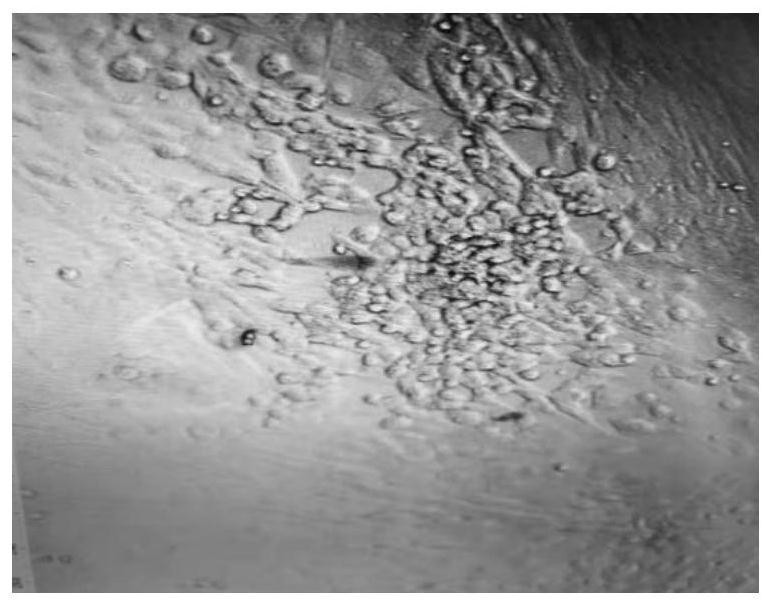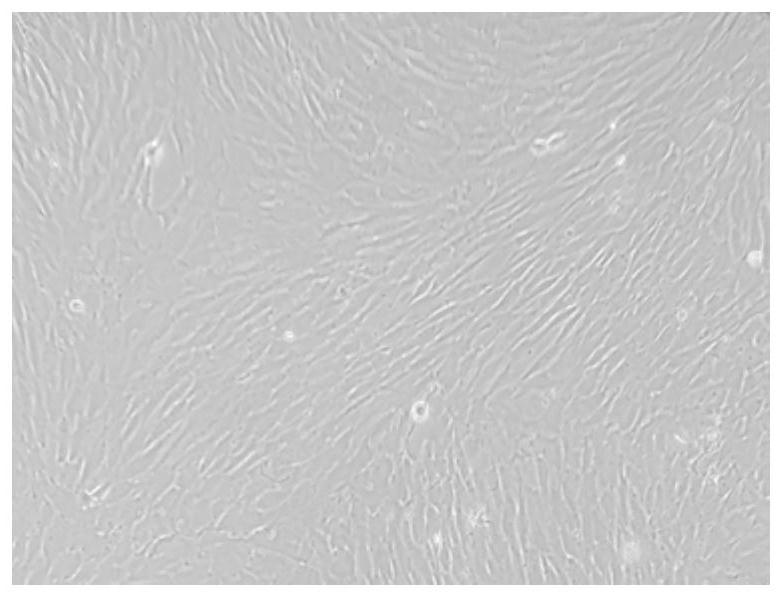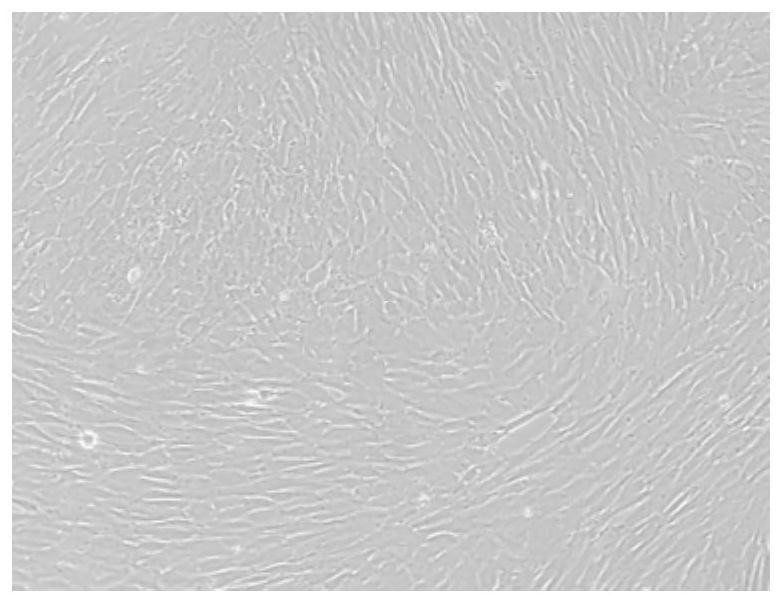Goat pox virus proliferation method, goat pox live vaccine as well as preparation method and application of goat pox live vaccine
A technology of goat pox virus and goat pox, which is applied in the direction of viruses, vaccines, antiviral agents, etc., can solve the problems of unstable quality of primary cells, restrictions on the stable production of vaccines in batches, and difficulty in control, so as to alleviate the problem of low cost and unsustainable Stable, conducive to large-scale proliferation, and alleviate the effect of poor stability
- Summary
- Abstract
- Description
- Claims
- Application Information
AI Technical Summary
Problems solved by technology
Method used
Image
Examples
preparation example Construction
[0067] Goat pox is a highly contagious infectious disease that seriously harms goats caused by goat pox virus. At present, the most effective prevention method is to inoculate goat pox live vaccine, and the raw material of the vaccine is goat pox virus. The traditional preparation method of goat pox virus is to collect sheep testis, prepare sheep testis primary cells, carry out adherent culture of the primary cells on a spinner bottle, inoculate and culture the virus. However, this method has problems such as difficulty in obtaining sheep testis, unstable quality of primary cells, and cumbersome process, which restrict the stable batch production of the vaccine. In view of this, it is proposed that the sheep pox virus propagation method of the present invention comprises the following steps:
[0068] First, the goatpox virus is subcultured and domesticated on a suspension culture cell line to obtain the domesticated virus. Virus subculture and domestication method, that is, ...
Embodiment 1
[0136] Will grow well at a concentration of 4.0×10 6 Each / mL cell line was placed in a 500mL shake flask, and the virus was inoculated at a dose of 0.02MOI. The culture conditions were: temperature 36-38°C, 5% CO 2 , 60% relative humidity, 125rpm rotation speed. The virus cultured for 96 hours was taken as progeny, and subcultured and acclimated once in this way. During the last subculture and domestication, samples were taken at 48, 72, 96, and 120 hours after inoculation to detect the virus content. The results are shown in Table 1.
Embodiment 2
[0138] The difference from Example 1 is that 2 generations are passed down and domesticated.
PUM
 Login to View More
Login to View More Abstract
Description
Claims
Application Information
 Login to View More
Login to View More - R&D
- Intellectual Property
- Life Sciences
- Materials
- Tech Scout
- Unparalleled Data Quality
- Higher Quality Content
- 60% Fewer Hallucinations
Browse by: Latest US Patents, China's latest patents, Technical Efficacy Thesaurus, Application Domain, Technology Topic, Popular Technical Reports.
© 2025 PatSnap. All rights reserved.Legal|Privacy policy|Modern Slavery Act Transparency Statement|Sitemap|About US| Contact US: help@patsnap.com



